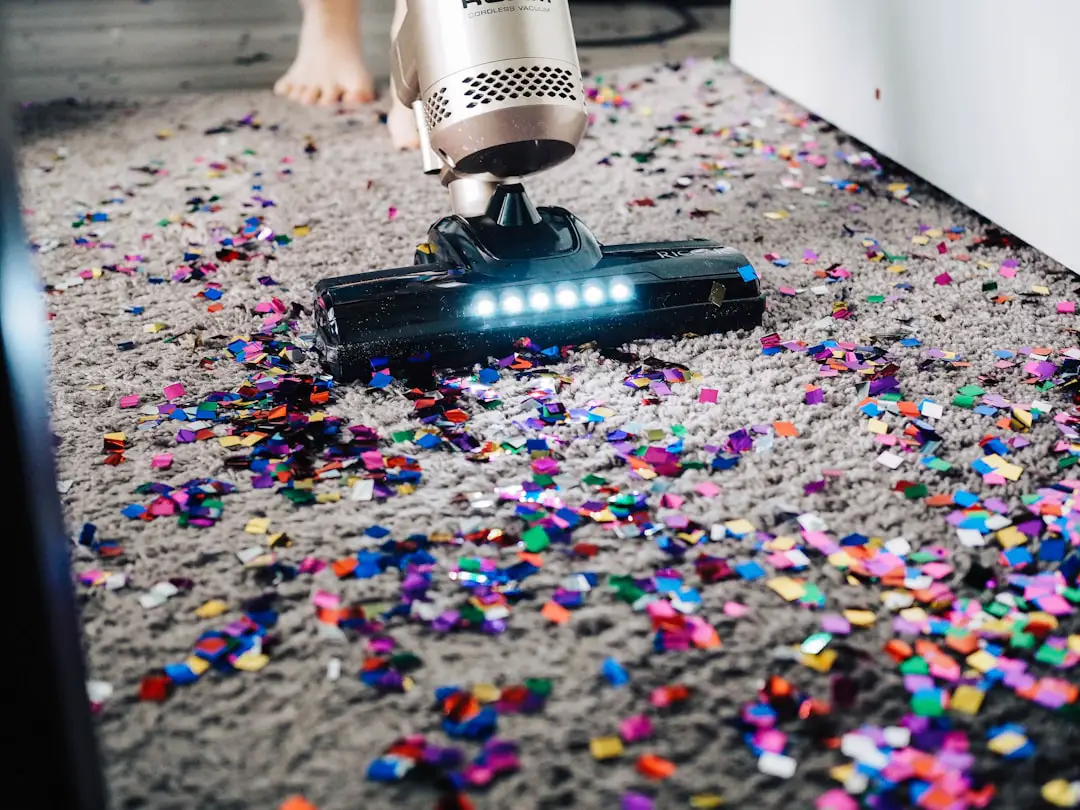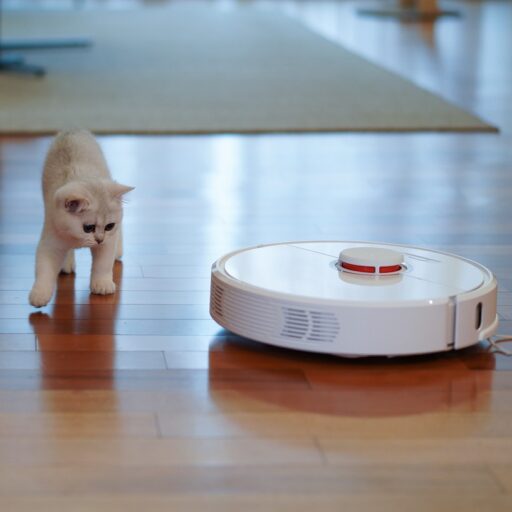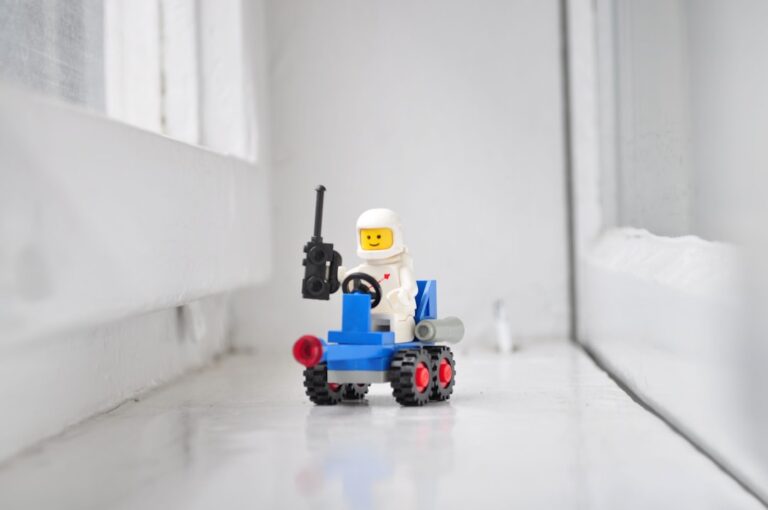Support our educational content for free when you purchase through links on our site. Learn more
How Do Robot Vacuums Work? 10 Fascinating Insights You Need to Know! 🤖
Have you ever wondered how those little robots zoom around your home, effortlessly picking up dirt and debris while you kick back and relax? If so, you’re in for a treat! In this comprehensive guide, we’ll dive deep into the inner workings of robot vacuums, exploring their advanced technology, smart features, and the science behind their cleaning prowess. You might be surprised to learn that the first robot vacuum was introduced over two decades ago, and since then, they’ve evolved into sophisticated devices that can map your home and even respond to voice commands!
In this article, we’ll not only answer the burning question of how robot vacuums work but also provide you with insights on the best models available today. Whether you’re a tech enthusiast or simply looking to simplify your cleaning routine, you’ll find valuable information that could change the way you think about home cleaning forever.
Key Takeaways
- Robot vacuums utilize advanced sensors and algorithms to navigate and clean your home efficiently.
- Different models offer various features, including mapping technology, voice control, and even mopping capabilities.
- Regular maintenance is essential for optimal performance, including emptying the dustbin and cleaning brushes.
- Popular brands like Eufy, Dreame, and iRobot offer a range of options to fit different needs and budgets.
- Robot vacuums are effective at picking up pet hair and allergens, making them ideal for pet owners.
Ready to explore the world of robot vacuums? 👉 Shop Eufy RoboVac on: Amazon | Eufy Official Website and 👉 Shop iRobot on: Amazon | iRobot Official Website to find the perfect cleaning companion for your home!
Table of Contents
Quick Tips and Facts
The Evolution of Robot Vacuums: A Brief History
What Exactly is a Robot Vacuum?
Key Components of a Robot Vacuum: Understanding the Tech
How Do Robot Vacuums Tackle Corners and Edges?
The Cleaning Process: How Robot Vacuums Get the Job Done
Smart Features: Navigating Your Home with Ease
Battery Life and Maintenance: Keeping Your Robot Vacuum Running Smoothly
Comparing Popular Robot Vacuum Brands: Which One is Right for You?
Common Misconceptions About Robot Vacuums: What You Need to Know
Conclusion
Recommended Links
FAQ
Reference Links
Quick Tips and Facts
Check out our related article about 🤖 The Ultimate Guide to Robot Vacuums: 25 Expert Picks for a Spotless 2024 Home! to learn more about the best robot vacuums on the market.
Here are some key things to know about robot vacuums:
- They use a combination of sensors and algorithms to navigate and clean your home.
- They can be controlled using smartphone apps or voice assistants.
- They have different types of navigation systems, including bounce navigation, visual navigation, and laser navigation.
- They can clean a variety of floor types, including hardwood, carpet, and tile.
- They often come with additional features, such as mopping and UV sterilization.
Key Features to Consider
When shopping for a robot vacuum, consider the following key features:
- Suction power: Look for a robot vacuum with strong suction power to effectively clean your floors.
- Navigation system: Consider a robot vacuum with a advanced navigation system, such as laser navigation, for more efficient cleaning.
- Battery life: Choose a robot vacuum with a long battery life to ensure it can clean your entire home without needing to recharge.
- Additional features: Consider a robot vacuum with additional features, such as mopping or UV sterilization, to get the most out of your purchase.
The Evolution of Robot Vacuums: A Brief History

The first robot vacuum was introduced in the early 2000s, and since then, the technology has evolved significantly. Today, robot vacuums are equipped with advanced sensors and algorithms that allow them to navigate and clean your home with ease. According to Wikipedia, the first robot vacuum was the iRobot Roomba, which was introduced in 2002.
Early Models
Early models of robot vacuums were relatively simple and had limited functionality. They used infrared sensors to detect obstacles and bump sensors to navigate around furniture. However, they were often prone to getting stuck and had limited battery life.
Modern Models
Modern models of robot vacuums are much more advanced and have a range of features, including Wi-Fi connectivity, voice control, and advanced navigation systems. They can also be controlled using smartphone apps and can even map your home to ensure a more efficient clean.
What Exactly is a Robot Vacuum?
A robot vacuum is a small, autonomous device that is designed to clean your home without the need for human intervention. It uses a combination of sensors and algorithms to navigate and clean your floors, and can be controlled using smartphone apps or voice assistants. According to Eufy, robot vacuums are equipped with obstacle sensors, cliff sensors, and dirt sensors to ensure a safe and effective clean.
Types of Robot Vacuums
There are several types of robot vacuums available, including:
- Entry-level models: These are basic robot vacuums that are designed for small homes and have limited features.
- Mid-range models: These are more advanced robot vacuums that have additional features, such as Wi-Fi connectivity and voice control.
- High-end models: These are advanced robot vacuums that have features such as laser navigation and mopping.
Key Components of a Robot Vacuum: Understanding the Tech
A robot vacuum is made up of several key components, including:
- Sensors: These are used to detect obstacles and navigate around furniture.
- Brushes: These are used to sweep debris into the vacuum’s path.
- Suction mechanism: This is used to pick up dirt and debris from the floor.
- Navigation system: This is used to guide the robot vacuum around your home.
Sensors
Sensors are a crucial component of a robot vacuum, and are used to detect obstacles and navigate around furniture. There are several types of sensors, including:
- Infrared sensors: These are used to detect obstacles and navigate around furniture.
- Cliff sensors: These are used to prevent the robot vacuum from falling down stairs.
- Dirt sensors: These are used to detect dirty areas and adjust the cleaning route accordingly.
How Do Robot Vacuums Tackle Corners and Edges?
Robot vacuums use a combination of sensors and algorithms to tackle corners and edges. They can detect when they are approaching a wall or corner, and adjust their cleaning route accordingly. According to Dreame, robot vacuums use corner detection sensors to detect when they are approaching a corner, and edge-cleaning brushes to sweep debris into the vacuum’s path.
Corner Detection Sensors
Corner detection sensors are used to detect when the robot vacuum is approaching a corner. They use infrared light to detect the presence of a wall or corner, and adjust the cleaning route accordingly.
Edge-Cleaning Brushes
Edge-cleaning brushes are used to sweep debris into the vacuum’s path. They are typically located on the sides of the robot vacuum, and are used to clean along edges and corners.
The Cleaning Process: How Robot Vacuums Get the Job Done
The cleaning process of a robot vacuum involves several steps, including:
- Mapping: The robot vacuum creates a map of your home to ensure a more efficient clean.
- Cleaning: The robot vacuum uses its suction mechanism and brushes to pick up dirt and debris from the floor.
- Docking and recharging: The robot vacuum returns to its docking station to recharge.
Mapping
Mapping is the process of creating a map of your home to ensure a more efficient clean. The robot vacuum uses its sensors and algorithms to create a map of your home, and stores this information for future use.
Cleaning
The cleaning process involves the use of the suction mechanism and brushes to pick up dirt and debris from the floor. The robot vacuum adjusts its cleaning route based on the type of floor it is cleaning, and uses its sensors to detect obstacles and navigate around furniture.
Smart Features: Navigating Your Home with Ease
Robot vacuums come with a range of smart features that make it easy to navigate your home. These include:
- Wi-Fi connectivity: Allows you to control your robot vacuum using a smartphone app.
- Voice control: Allows you to control your robot vacuum using voice commands.
- Mapping: Creates a map of your home to ensure a more efficient clean.
Wi-Fi Connectivity
Wi-Fi connectivity allows you to control your robot vacuum using a smartphone app. You can schedule cleanings, adjust settings, and receive notifications when the cleaning cycle is complete.
Voice Control
Voice control allows you to control your robot vacuum using voice commands. You can use voice assistants such as Amazon Alexa or Google Assistant to control your robot vacuum.
Battery Life and Maintenance: Keeping Your Robot Vacuum Running Smoothly
Battery life and maintenance are important considerations when it comes to robot vacuums. Here are some tips to keep your robot vacuum running smoothly:
- Charge regularly: Make sure to charge your robot vacuum regularly to ensure it has enough power to complete a cleaning cycle.
- Clean the brushes: Regularly clean the brushes to ensure they are free from debris and hair.
- Empty the dustbin: Regularly empty the dustbin to ensure it doesn’t get too full and affect the performance of the robot vacuum.
Charging
Charging is an important part of maintaining your robot vacuum. Make sure to charge your robot vacuum regularly to ensure it has enough power to complete a cleaning cycle.
Cleaning the Brushes
Cleaning the brushes is an important part of maintaining your robot vacuum. Regularly clean the brushes to ensure they are free from debris and hair.
Comparing Popular Robot Vacuum Brands: Which One is Right for You?
There are several popular robot vacuum brands available, each with their own unique features and benefits. Here are some of the most popular brands:
- Eufy: Known for their affordable and feature-rich robot vacuums.
- Dreame: Known for their high-end robot vacuums with advanced features such as laser navigation.
- iRobot: Known for their high-end robot vacuums with advanced features such as mapping and voice control.
Eufy
Eufy is a popular brand that offers a range of affordable and feature-rich robot vacuums. Their robot vacuums are known for their strong suction power and advanced navigation systems. You can find Eufy robot vacuums on Amazon or on the Eufy Official Website.
Dreame
Dreame is a popular brand that offers a range of high-end robot vacuums with advanced features such as laser navigation. Their robot vacuums are known for their strong suction power and advanced navigation systems. You can find Dreame robot vacuums on Amazon or on the Dreame Official Website.
iRobot
iRobot is a popular brand that offers a range of high-end robot vacuums with advanced features such as mapping and voice control. Their robot vacuums are known for their strong suction power and advanced navigation systems. You can find iRobot robot vacuums on Amazon or on the iRobot Official Website.
Common Misconceptions About Robot Vacuums: What You Need to Know
There are several common misconceptions about robot vacuums that you should be aware of. Here are some of the most common misconceptions:
- They are too expensive: While some robot vacuums can be expensive, there are many affordable options available.
- They are not effective: Robot vacuums are highly effective at cleaning your home, and can even map your home to ensure a more efficient clean.
- They are difficult to use: Robot vacuums are easy to use, and can be controlled using smartphone apps or voice assistants.
They are Too Expensive
While some robot vacuums can be expensive, there are many affordable options available. You can find robot vacuums on Amazon or on the Eufy Official Website, with prices starting from around $200.
They are Not Effective
Robot vacuums are highly effective at cleaning your home, and can even map your home to ensure a more efficient clean. They use sensors and algorithms to navigate and clean your floors, and can adjust their cleaning route based on the type of floor they are cleaning.
They are Difficult to Use
Robot vacuums are easy to use, and can be controlled using smartphone apps or voice assistants. You can schedule cleanings, adjust settings, and receive notifications when the cleaning cycle is complete.
Conclusion

In summary, robot vacuums are a game-changer for anyone looking to simplify their cleaning routine. They combine advanced technology, such as sensors and AI algorithms, to navigate your home efficiently, ensuring that your floors remain spotless with minimal effort on your part.
Positives and Negatives
Positives:
- Convenience: Schedule cleanings and let the vacuum do the work while you relax.
- Advanced Navigation: Many models, like the Eufy RoboVac 11S Max, use sophisticated mapping technologies to clean efficiently.
- Pet-Friendly: They are effective at picking up pet hair and allergens, making them ideal for pet owners.
- Smart Features: Integration with smartphone apps and voice assistants adds a layer of convenience.
Negatives:
- Limited to Flat Surfaces: Most robot vacuums struggle with stairs and other hard-to-reach areas.
- Maintenance Required: Regular emptying of the dustbin and cleaning of brushes is necessary for optimal performance.
- Price Variability: While there are affordable options, high-end models can be quite expensive.
Overall, we confidently recommend investing in a robot vacuum, especially if you lead a busy lifestyle and want to keep your home clean with minimal effort. With options like the Eufy RoboVac and Dreame models, you can find a vacuum that fits your needs and budget perfectly!
Recommended Links
- 👉 Shop Eufy RoboVac on: Amazon | Eufy Official Website
- 👉 Shop Dreame Robot Vacuum on: Amazon | Dreame Official Website
- 👉 Shop iRobot on: Amazon | iRobot Official Website
- Books on Robot Technology: Robot Vacuum Technology on Amazon
FAQ

What are the benefits of using a robot vacuum?
Robot vacuums offer several benefits, including:
- Time-Saving: They automate the cleaning process, allowing you to focus on other tasks.
- Consistent Cleaning: Regular scheduled cleanings help maintain a tidy home.
- Smart Features: Many models can be controlled via smartphone apps, making it easy to manage cleaning sessions remotely.
How do robot vacuums navigate around furniture and other obstacles?
Robot vacuums use a combination of infrared sensors, cliff sensors, and bump sensors to detect obstacles in their path. They adjust their cleaning route in real-time to avoid collisions, ensuring they clean efficiently without getting stuck.
Read more about “Best Robot Vacuum with Obstacle Avoidance in 2024”
Can robot vacuums clean stairs and other hard-to-reach areas?
Most robot vacuums are not designed to clean stairs due to their inability to navigate vertical spaces. However, they can effectively clean flat surfaces and are great for areas under furniture where traditional vacuums struggle to reach.
Do robot vacuums require regular maintenance and upkeep?
Yes, regular maintenance is essential for optimal performance. This includes:
- Emptying the dustbin after each use.
- Cleaning the brushes to prevent hair and debris buildup.
- Checking for any blockages in the suction pathway.
How long do robot vacuums typically last before needing to be replaced?
On average, robot vacuums can last between 3 to 5 years, depending on usage and maintenance. Regular upkeep can extend their lifespan, while neglect can lead to decreased performance over time.
Are robot vacuums effective at cleaning pet hair and allergens?
Absolutely! Many robot vacuums are specifically designed to handle pet hair and allergens. Models like the Eufy RoboVac 11S Max have strong suction power and specialized brushes that effectively pick up pet hair, making them ideal for households with pets.
Can I control and schedule my robot vacuum using a smartphone app?
Yes, most modern robot vacuums come with smartphone app compatibility. This allows you to schedule cleanings, adjust settings, and monitor cleaning progress from anywhere, adding a layer of convenience to your cleaning routine.



[…] Robot vacuums are autonomous devices that use sensors, AI algorithms, and mapping systems to navigate and clean your home automatically. They can detect obstacles, navigate around them, and perform an efficient cleaning routine. To learn more about how robot vacuums work, check out our dedicated article. […]